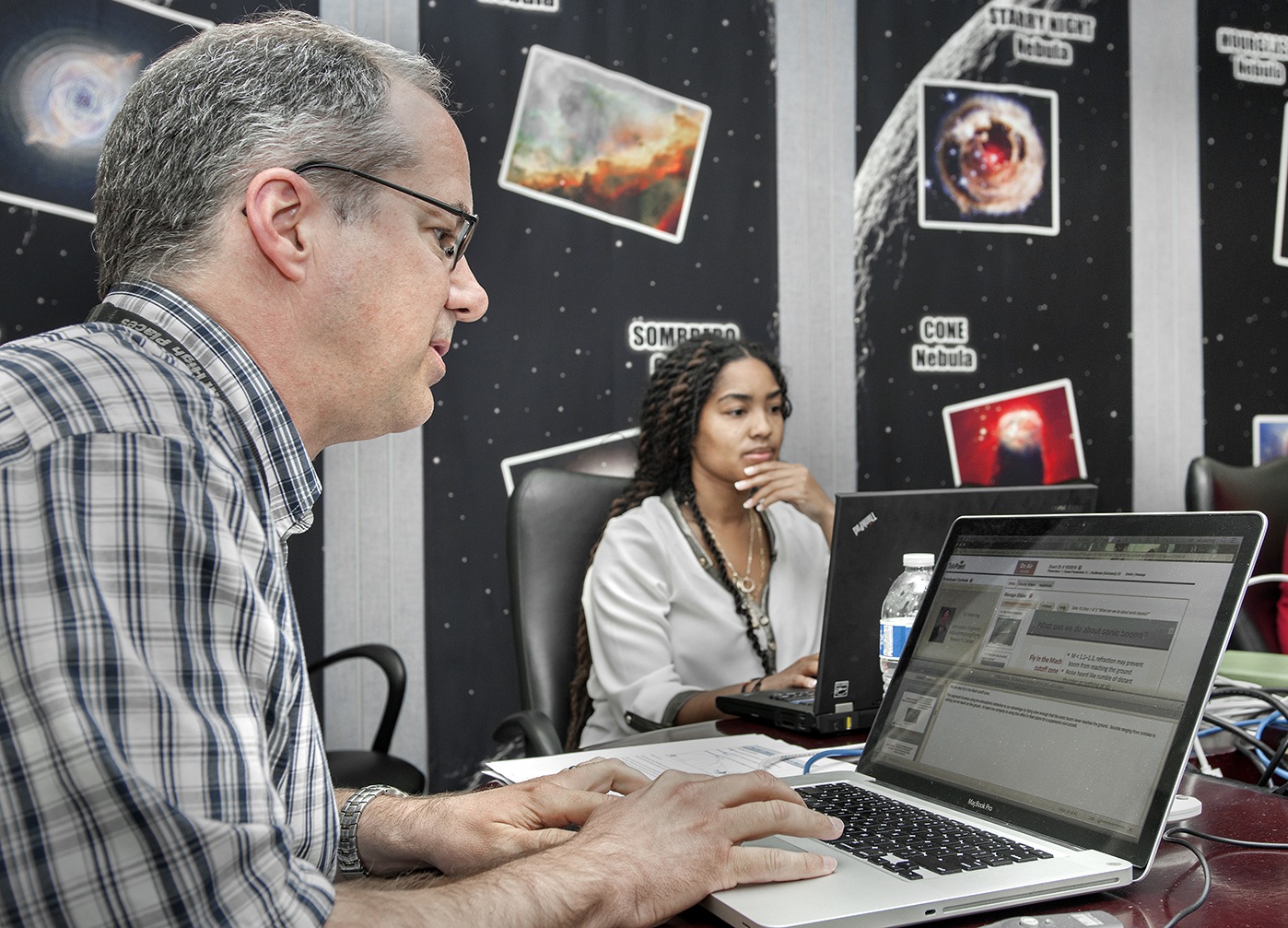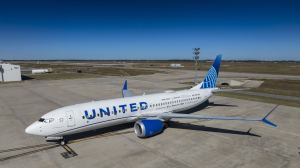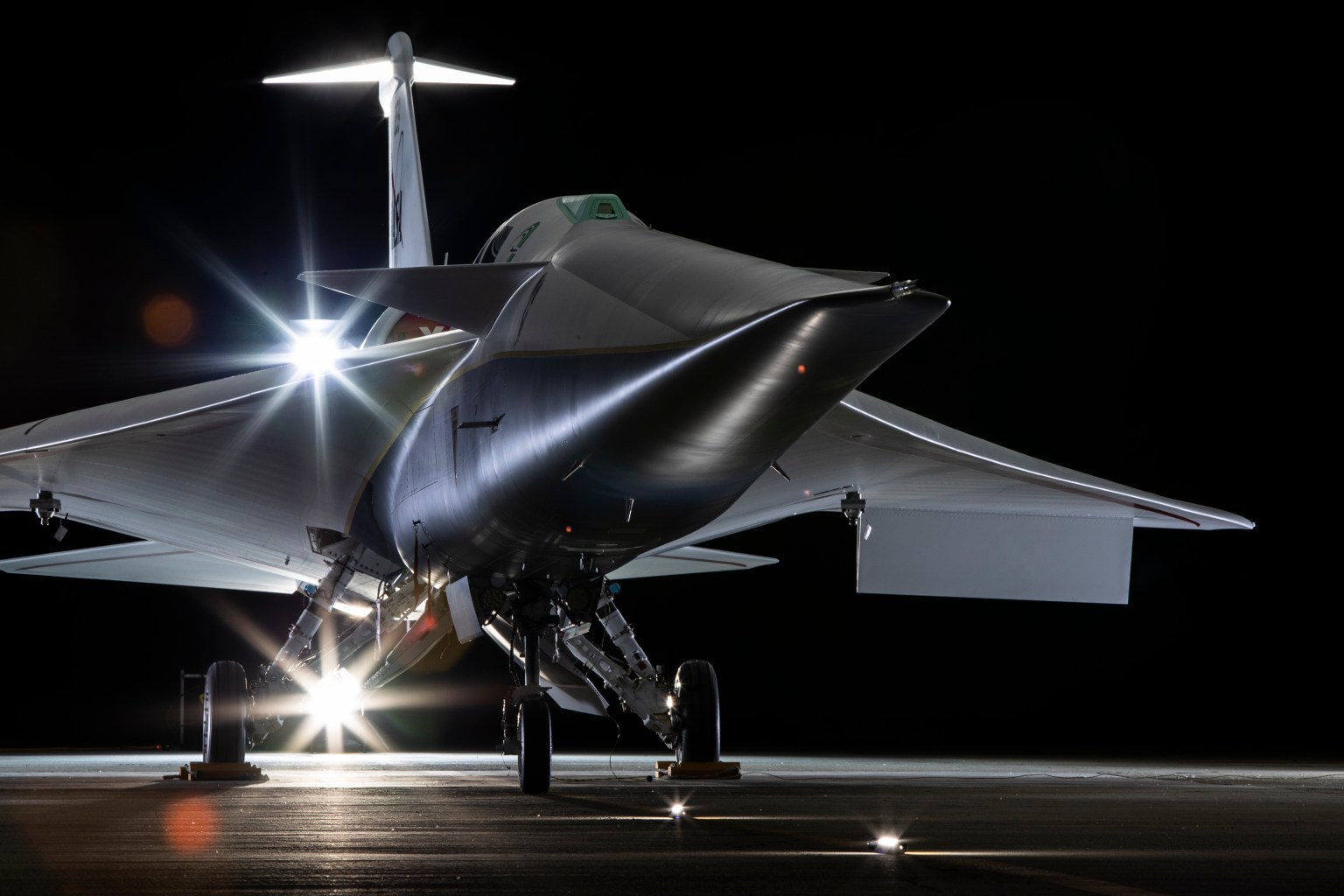Aerospace engineers at NASA’s Armstrong Flight Research Center and Wyle Laboratories have developed a revolutionary software system capable of displaying the location and intensity of shock waves caused by supersonic aircraft. When integrated into aircraft cockpits or ground-based control rooms, the new technology could enable pilots of future supersonic aircraft to make necessary flight-path adjustments to control the location and intensity of sonic booms.
Called the Cockpit Interactive Sonic Boom Display Avionics – CISBoomDA for short – the software technology could eventually play a key role in enabling supersonic flight over land by future “low-boom” aircraft that is currently prohibited by Federal Aviation Administration regulations.
Developed by aerospace engineer Ed Haering, technical lead for supersonic aerodynamics research at NASA Armstrong, and Ken Plotkin of Wyle Laboratories in El Segundo, Calif., the software application calculates an airplane’s sonic boom footprint using vehicle and flight parameters and current atmospheric conditions. Processed data provides real-time information regarding location and intensity of the airplane’s shock wave.
The CISBoomDA software can be used on current-generation supersonic aircraft, which generate loud sonic booms. Of greater interest, however, is its integration into future-generation “low-boom” civil aircraft, anticipated to be quiet enough for flight over populated areas.
“The class of vehicles we’re looking at will be very unobtrusive,” he said, “making ‘sonic puffs’ rather than sonic booms.”
Haering and other NASA researchers want to share this technology with companies developing supersonic military and commercial aircraft, avionics integrators supporting these aircraft, and with the Federal Aviation Administration. Supersonic flight over the continental U.S. is currently limited by strict regulations, which would have to be changed to accommodate even low-boom aircraft. NASA is coordinating with the FAA and the International Civil Aviation Organization regarding a possible future change to the existing rule. Software such as CISBoomDA could provide the FAA with a tool to approve flight plans, monitor flying aircraft, and review flight data to enforce regulations.
Researchers hope to test the real-time cockpit display in a NASA F/A-18 later this year and eventually integrate it into a low-boom experimental aircraft.
Haering and Laura Fobel, NASA Armstrong’s Technology Transfer Officer, recently discussed information on the Cockpit Interactive Sonic Boom Display Avionics technology with potential partners during a webinar sponsored by Tech Briefs Media Group. Slides and audio from the webinar are available for viewing at: https://event.webcasts.com/starthere.jsp?ei=1030818.
“We are actively seeking development partners to advance the CISBoomDA software,” said Fobel.
Peter Merlin, Public Affairs
NASA Armstrong Flight Research Center

































